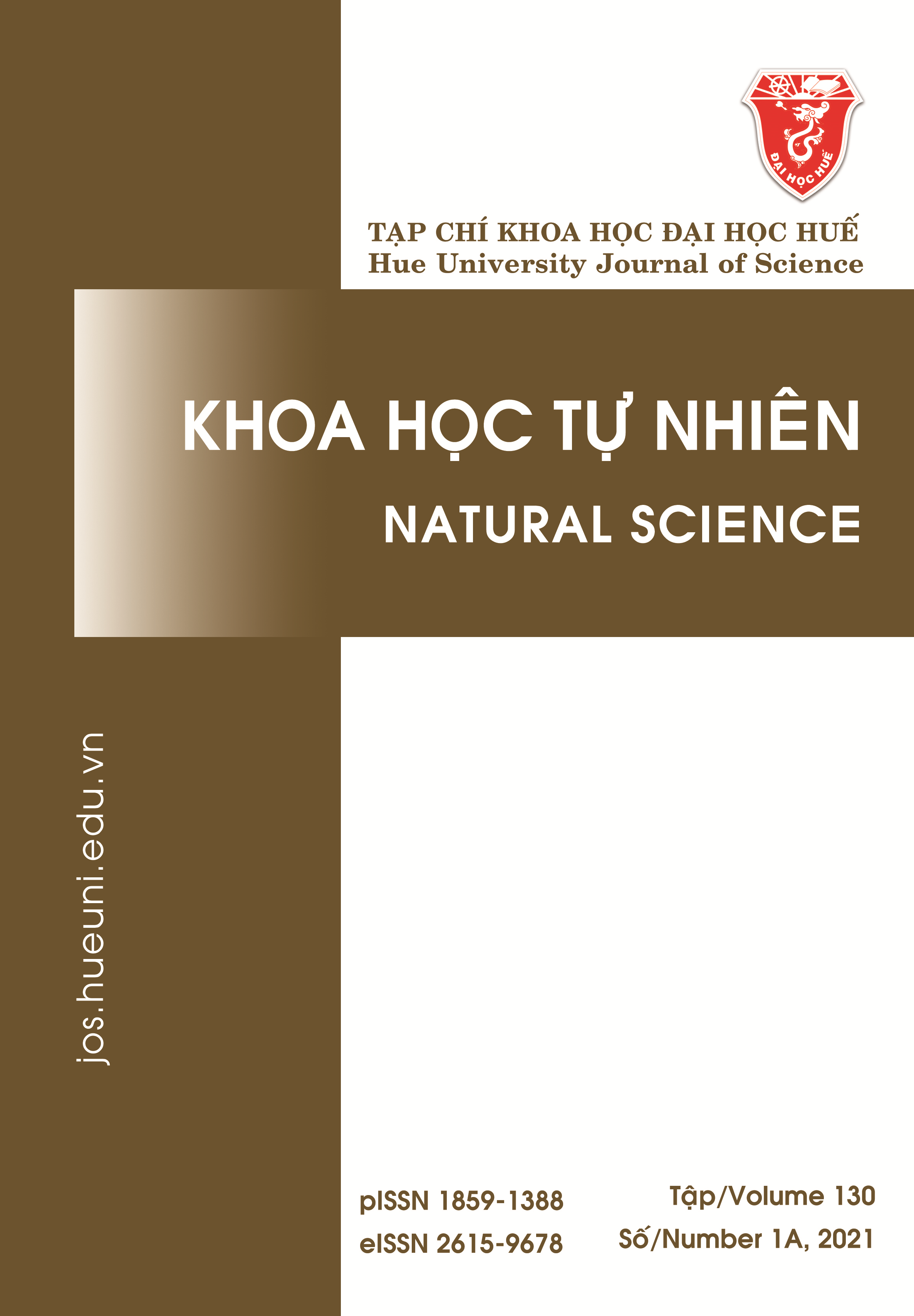Abstract
Heliciopsis lobata is effective in the treatment of diseases and is used in the traditional medicine of ethnic minorities. In this study, the methanol extract of the leaves of Heliciopsis lobata is used to assess its ability to inhibit cell growth of breast and liver cancer cells by using the MTT assay, cell morphology, and apoptotic morphology by DAPI staining. The results show that this extract inhibits the proliferation of HepG2 and MCF7 cell lines with IC50 values of 0.084 mg/mL and 0.812 mg/mL, respectively. The extract induces apoptosis in HepG2 cells more strongly than in MCF7 cells; and therefore, it is potential to inhibit the proliferation of liver cancer cells.
References
- Bray F, Ferlay J, Soerjomataram I, Siegel RL, Torre LA, Jemal A. Global cancer statistics 2018: GLOBOCAN estimates of incidence and mortality worldwide for 36 cancers in 185 countries. CA: A Cancer Journal for Clinicians. 2018;68(6):394-424. DOI: https://doi.org/10.3322/caac.21492
- Lichota A, Gwozdzinski K. Anticancer Activity of Natural Compounds from Plant and Marine Environment. International Journal of Molecular Sciences. 2018;19(11):3533. DOI: https://doi.org/10.3390/ijms19113533
- Li D, Liu M-S, Li Z-L, Kang S-L, Hua H-M. Studies on chemical constituents of Heliciopsis lobata II. China Journal of Chinese Materia Medica. 2008;33(4):409-511.
- Feng J, Chen X, Wang Y, Du Y, Sun Q, Zang W, et al. Myricetin inhibits proliferation and induces apoptosis and cell cycle arrest in gastric cancer cells. Molecular and Cellular Biochemistry. 2015 06 27;408(1-2):163-170. DOI: https://doi.org/10.1007/s11010-015-2492-1
- Man X, Yang L, Liu S, Yang L, Li M, Fu Q. Arbutin promotes MC3T3‑E1 mouse osteoblast precursor cell proliferation and differentiation via the Wnt/β‑catenin signaling pathway. Molecular Medicine Reports. 2019;19(6):4637-4644. DOI: https://doi.org/10.3892/mmr.2019.10125
- Riccardi C, Nicoletti I. Analysis of apoptosis by propidium iodide staining and flow cytometry. Nature Protocols. 2006;1(3):1458-1461. DOI: https://doi.org/10.1038/nprot.2006.238
- Qi W-Y, Ou N, Wu X-D, Xu H-M. New arbutin derivatives from the leaves of Heliciopsis lobata with cytotoxicity. Chinese Journal of Natural Medicines. 2016;14(10):789-93. DOI: https://doi.org/10.1016/S1875-5364(16)30094-2
- He Q-Q, Liu M-S, Jin D-J, Kong L-Y. Phenolic glycosides from leaves of Hopiciopsis lobata: Note. Journal of Asian Natural Products Research. 2006;8(4):373-377. DOI: https://doi.org/10.1080/10286020500172251
- Elmore S. Apoptosis: A Review of Programmed Cell Death. Toxicol Pathol. 2007;35(4):495-516. DOI: https://doi.org/10.1080/01926230701320337
- Carneiro BA, El-Deiry WS. Targeting apoptosis in cancer therapy. Clinical Oncology. 2020;17(7):395-417. DOI: https://doi.org/10.1038/s41571-020-0341-y
- Safarzadeh E, Sandoghchian Shotorbani S, Baradaran B. Herbal Medicine as Inducers of Apoptosis in Cancer Treatment. Advanced Pharmaceutical Bulletin. 2014;4(5):421-427. DOI: https://doi.org/10.5681/APB.2014.062
- Jagetia GC. Anticancer activity of Helicia nilagirica bedd in mice transplanted with Dalton’s lymphoma. International Journal of Complementary & Alternative Medicine. 2018;11(2):112-123. DOI: https://doi.org/10.15406/ijcam.2018.11.00380

This work is licensed under a Creative Commons Attribution-ShareAlike 4.0 International License.
Copyright (c) 2021 Array




